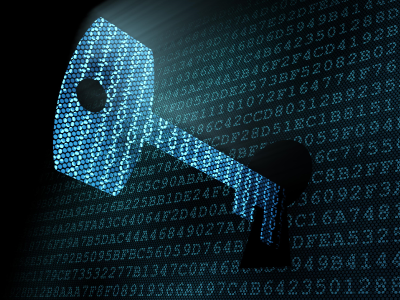How to Encrypt Your Files and Folders
When it comes to encrypting your files, you have a lot of options. Here are a few good ways to encrypt your files and folders.

Do you have files or folders on your computer that you don't want anyone else to see? Do you want to be able to send and transport those files without fear that someone else will read or tamper with them? If so, you might want to encrypt some or all of your files and folders.
Encryption is a means of mathematically scrambling a message to make it look like gibberish. When you encrypt a file, a complex algorithm scrambles the file's data using a key, or a string of unique characters. Encryption is sort of like a box, and the key is like a physical key that unlocks the box so you can read your files unencrypted, or, as experts say, in plaintext.
MORE: Best Antivirus Software and Apps
There are plenty of reasons why you might want to hide files or folders from prying eyes. Maybe you're planning on crossing the border and don't want border guards to be able to read your personal files. Maybe you share a computer with other people and want an extra layer of security around your own stuff. Maybe you handle highly sensitive material. We're here to help with this step-by-step guide to encrypting your files and folders.
How to encrypt files on Windows Computer
Microsoft Windows users have two options for encrypting their files and folders. Microsoft Office has a built-in encryption feature, and Windows itself has Encrypting File System, or EFS, which encrypts files through the file directory.
Read our how-to on these two types of encryption for a step-by-step guide.
MORE: Should You Trust US Companies with Your Data?
Get instant access to breaking news, the hottest reviews, great deals and helpful tips.
How to encrypt files on Mac OS X
If you're on a Mac, you also have a built-in encryption service: TrueVault. This feature encrypts your entire hard drive, which then unlocks when you sign in with your Mac user account.
For instructions setting up TrueVault on Mac OS X, read how step-by-step guide.
How to encrypt your Android phone
Android devices also have a feature that lets you quickly and accessibly encrypt all the files and folders stored on the device. For a walk-through of how to set it up see our guide to encrypting an Android phone or tablet.
How to encrypt your iOS device
On an iPad, or any iPhone that's third-generation or later, encryption is built into the device. To put that protection to work, all you need to do is set a passcode. Check out our step-by-step guide for setting a passcode on iOS.
MORE: 13 Security and Privacy Tips for the Truly Paranoid
How to encrypt a folder using TrueCrypt
TrueCrypt is a powerful and free open-source program for encrypting part or all of your hard drive. With TrueCrypt, you can create hidden "volumes" stored in a larger encrypted partition. Not only will intruders be unable to access your files, but they won't even know that your files are there.
If you use TrueCrypt, however, be sure to run version 7.1, as the program's creators said that 7.2 "may contain unfixed security issues." The TrueCrypt creators subsequently shut down their official website and recommended users switch to Bitlocker. TrueCrypt is also currently in the middle of an independent security audit, and thus far it appears that the 7.1 release is stable and secure.
TrueCrypt seems to offer stronger encryption than the other options we've used here, and basic computer users may find it difficult to run. For a more complete guide to using TrueCrypt, see our how-to see our article on Tom's Guide.
Email jscharr@techmedianetwork.com or follow her @JillScharr and Google+. Follow us @TomsGuide, on Facebook and on Google+.
Jill Scharr is a creative writer and narrative designer in the videogame industry. She's currently Project Lead Writer at the games studio Harebrained Schemes, and has also worked at Bungie. Prior to that she worked as a Staff Writer for Tom's Guide, covering video games, online security, 3D printing and tech innovation among many subjects.
-
drh2020 You need to update the article to reference the current status of TrueCrypt and its replacement projects.Reply
